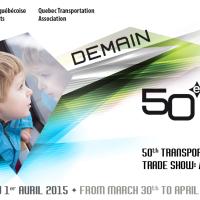Smart Mobility is more than an app on a SmartPhone

Mobility is a service… isn’t it?
“Mobility as a service is a new concept that encompasses all types of transport services offered in a defined urban context. It’s a way of proposing comprehensive mobility services to users and reducing vehicle usage.” [AQTr 2016]
Any way you look at it, Mobility-as-a-service (MaaS) is a huge topic. As described above by the AQTr, it’s limited only to “defined urban” which leaves much scope in an opinion piece to address the service question – and perhaps a bit more.
Parking, for the moment, detailed questions of engineering and technology – the factual world many of us inhabit. The aim of this article is to reflect on wider ranging aspects of mobility, where it fits into the overall picture, and what may be some of the challenges and opportunities beyond 2016.
Implicit in that is what mobility can do for us, but also what we can do for, or better still, with mobility.
We’ve always been mobile… haven’t we?
Sure, according to the definition of mobility:
Mobility məʊˈbɪləti/
noun
1. The ability to move or be moved freely and easily.
So all that’s changed is the way in which we are “moved freely and easily”, steam power came along and then the internal combustion engine replaced the horse, right?
Only in part. Mobility is not something that happens in isolation.
Mobility is all about the movement of people and the delivery of goods and many services. Economies, industries, and communities can’t run without mobility, so it’s not optional, and it certainly cannot afford to be a licence for inefficiencies or profligacy in resource consumption.

Paradoxically, the needs and interests of oil-producing and oil-consuming economies are increasingly convergent on future perspectives for sustainable transportation.
Aha, energy!
Yes. In fact the image [2] could equally read “Energy is not optional”. Both are integral to the dynamics of any functioning economy that aspires to grow and exhibit sustainability.
Let’s call this brave new world “New Mobility”
Customer aspirations, needs, and wishes are undoubtedly evolving fast, driven by demographics, accelerating urbanization, and ever-more pressing imperatives on the alternative fuels/clean energy question.
Is transportation making the world greener?
More in terms of a valuable side-effect than a primary objective, but delivered via energy efficiency solutions and large-scale implementation that make a positive contribution to the climate conundrum.
That said, environmental aspects are an essential part of any urban mobility equation, and the scale of the challenge hasn’t stopped growing since the advent of horseless carriages:
“Any significant change in natural balance(s) of the planet has an effect that
may – or may not – impact on our resource consumption and ‘way-of-life
choices’. Population growth from 3 billion in 1960 to at least 8 billion in 2040
[lowest estimate, UN 2010 projections] rates as ‘significant’ – particularly
when the energy intensity of highly connected, increasingly industrialised and
urbanised economies is factored in.”
It is that market volume part of the equation – multiplying ”clean tech” product offerings that deliver ultra-low emissions on an absolute scale and optimizes resource consumption. Choices made now by the cities, as magnets attracting the iron filings of ever-growing populations, are critical.
This is not an academic soul-searching exercise: metro mobility decisions will affect propulsion systems policy and energy storage strategy for instance, both critical for ironing out the “ripples” of urban transport demand profiles. This will impact global supply chains and permeate even fundamental issues of rare earth vs. earth abundant materials.
What happened to “service”?
Time for another definition:
Service ˈsəːvɪs/
noun
1. The action of helping or doing work for someone.
"millions are involved in voluntary service"
2. A system supplying a public need such as transport, communications, or utilities
such as electricity and water.
"a regular bus service"
It’s therefore something else to be publicly funded and resourced: make the busses and subways run on time, “people expect it”, and that’s “mobility”? Job done!
Not at all.
Mobility-as-a-service is a physical activity based on tangibles
I hate to disappoint fans of science-fiction or time travel, but beaming people or things to another location with a couple of taps on a touchscreen is an app too far off in the future.
The reality is more straightforward:
“Getting the kids to school, being at central for a train or the airport for a flight, attending (still most) medical check-ups, getting stationery or sushi delivered to the CBD, having food on the supermarket shelves and a few residual human beings at the checkout, operators working in factories making ‘stuff’ we need or want – the list goes on, and it all requires physical movement of people and products.”
This “mobility reality” is real, not virtual.
OK, so that sets the scene in practical terms. What actions arise?
The case for provision of mobility services is compelling.
With one caveat, we’d have no issue with enthusiastically endorsing the fact that MaaS is a key building block of the overall economy.
“That warning is mirrored in the scenario of Australia’s mining and resources boom cooling off. One oft-repeated easy-way-out was an assurance that ‘services’ would fill the vacuum and be our economic salvation.
If we've collectively learnt anything from that euphemistically labelled 'GFC', it's that certain financial market players (not to mention the ratings agencies) are quick to forecast impending Armageddon.
This came back to haunt us within hours of the U.K. referendum when EU re-alignment negotiations, that may take two years, hadn’t even started. The point is that we’d counsel strongly against reliance on ‘services’ that are not firmly, visibly, and credibly linked to real customers – in this case citizens, residents, and ratepayers. An abstract ‘service activity’ can be shipped offshore overnight without having to close even one set of factory gates…”
The mix of service delivery, the “How?” of individual transport, mass transit, product supply, etc. is a work-in-progress with common denominators, but without a universal template for all metropolitan centres.
Want to decode that for us?
There is compelling evidence that e-Mobility is now becoming mainstream, with existing and new companies being taken very seriously. It’s possible that a big automotive establishment player – cutting corners on emissions – has given the ramping up of E-Mobility an extra nudge, but the momentum was already building.
What? Just about avoiding the skidpan of buzzwords, marketeers will recite “easy-mobility”, “energy-mobility” or eco-“mobility”. It’s all those things, but primarily “electro-mobility” and it looks like the dawn of a new era of motoring, just 100 years on from the Detroit Electric car that broke new ground, had customer appeal in the face of high gasoline prices, and then faded against the march of the more efficient internal combustion engine and the Wall Street Crash.
Let’s make a “future industry” call: vehicle electrification in various forms is integral to future urban mobility.
E-Mobility is at the core of “new mobility” and the key enabler for coordinated urban mobility services. Here’s one view of that universe:

In terms of a formula for “Urban-Mobility-as-a Service”, we can group the synergy planets, energy-smart CBDs, high-connectivity traffic management, and integrated transport systems into a mobility operating system, characterized by ultra-connectivity.
Let’s regard that as the system software, but there’s no reason why metro centres should just accept what’s on offer for hardware.
So we need to get involved with the industry?
Collaboration always works better and is the key ingredient for delivering innovation excellence.
Second caveat: we apply a progress delivery test for innovation that makes it into production or operation. Unlike simple change (non-directional) or impressive complexity (often hyped as innovation in lieu of actual deliverables) progress is highly directional, i.e., forwards, and delivers added value (however defined, in whatever context).
This is vitally important as the pace of change is accelerating. The best way to be instrumental in setting the right course is through pro-active participation rather than playing reactive catch-up.
Just one possible high-profile example:
“The technology challenges of ‘driverless’ may be do-able with currently available or near-term solutions, but the practicalities of ‘cyber-infrastructure’, mixed traffic systems and ‘liability baggage’ carried over from conventional automotive engineering mean that large-scale ‘autonomous’ is far from a done deal.
An argument advanced in favour of ‘must do autonomous’ is a likely improvement of about 20% in city centre parking capacity utilisation – with a corresponding reduction in fuel burn, emissions, and frazzle driving around looking for a vacant spot.
That’s fine and commendable, but guidance systems connected to automated, intelligent allocation of parking slots can work also with Homo sapiens at the wheel. It’s worth remembering that ‘New Mobility’ doesn’t depend on having all the ‘driving’ done by chips, sensors, and algorithms. Before that possible end game – and 100% devolution to technology of control and legal liability – we have an array of Driver Assist Systems (already mainstream), plus Advanced Driver Assist Systems coming on stream.”
Anything else we can do to engage with the industry?
Certainly. In Australia, we started an exercise to map advanced manufacturing** scenarios beyond “old automotive business-as-usual”. Rather than start constrained by searching for the “new automotive”, we tried a clean-sheet “What if?” approach by plotting “high-value manufacturing”** (the preferred concept) against energy (secure, clean, affordable). One of the key intersects emerges as transportation & mobility. Q.E.D.!
Great, but what’s that got to do with cities?
Isn’t manufacturing a generally noisy, dirty activity with eyesore factories best kept away from vibrant cities?
Quite the opposite. Lingering perceptions about manufacturing being uncool and stuck in an earlier industrial revolution are breaking down, and the sector is beginning to attract the brightest and the best.
It gets better: in Germany, often the default manufacturing success story, companies are flocking back to the cities. Scoping work for a grand project under the umbrella of “future urban industries” includes among core factors mobility and traffic, energy and resources, infrastructure, and “urban production”. More Q.E.D.
Finally…
These notes hopefully shine some light on any belief that “urban mobility” starts and ends at the subway turnstile or an auto dealership. We’d probably now like to qualify the AQTr’s declared goal of “reducing vehicle usage” and aim more for “optimizing or maximizing vehicle utilization.”
After sharing a short introductory journey, a range of deeper discussion points remains unsaid – for now.
In the spirit of welcoming a follow-up dialogue, we’ll sign off with this quote from a recent industry briefing:
“Capacity building from cutting-edge capabilities is best achieved with ‘international friends’, i.e., highly collaborative development and commercialisation partnerships.”
Richard Jefferies is the CEO, Low Carbon Mobility International Pty. Ltd, and manager / co-founder, Manufacturing on the Move – a Window on High-Value Manufacturing in and from Australia.
Group@LowCarbonMobility.com
Graphics sources:
[1] LCM International P/L, Greater Sydney; Jacob Sempler & Emil Tiismann, Stockholm, via TECHINSIDER, NYC
[2] LCM International P/L, Greater Sydney
[3] LCM International P/L, Greater Sydney; FutureSteelVehicle - WorldAutoSteel, Brussels & Detroit





















